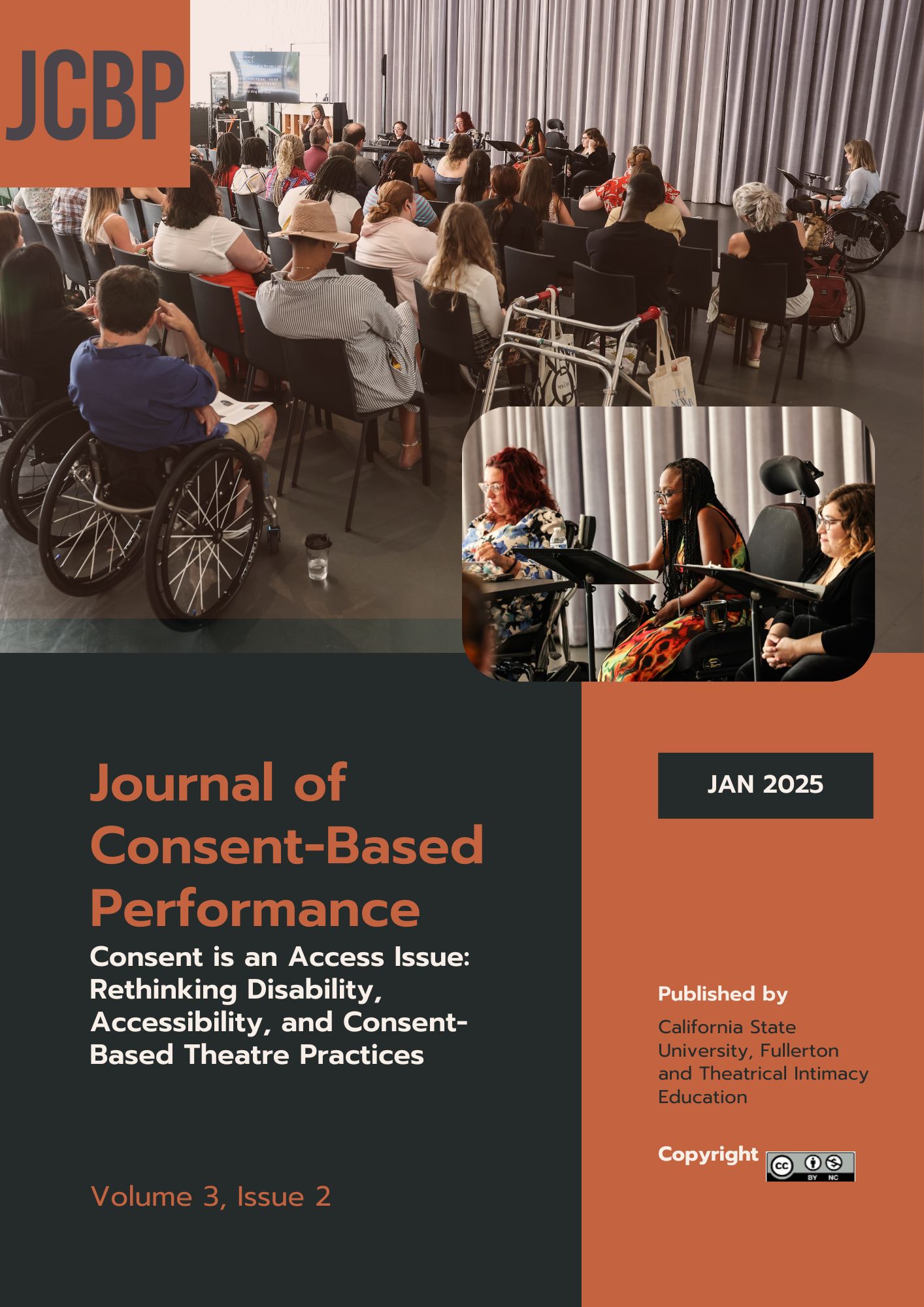Disability Justice Case Studies from a Disabled Intimacy Coordinator
Main Article Content
Abstract
As the COVID-19 pandemic hit, communities within the worlds of theatre, acting, and nearly every embodied performance art bore witness to an unprecedented collective longing, yearning, and attempts to make “pandemic accessible theatre” online. Individual expressions of the pain that came with being unable to access their passions reminded me of the time several year prior when my own physical disabilities had worsened to a significant point at which live theatre was not possible for my body. And yet, when the pandemic waned (I must state here: it is not over), there was a disappointing accompanying waning of accessibility attempts that had been found successful and had no reason not to continue…other than the fact that perhaps it was easier to pretend we were all “back to normal,” This abandoning of accessibility efforts left many disabled actors feeling left behind. At this time, I reflected on a quote that I believe to be a guiding light for accessibility in the arts and in life: “If you aim for justice & equity, you'll hit diversity. If you aim for "diversity," you'll hit tokenism & justification of the unjust status quo.” (Berry 2021). So, if we are aiming for disability justice through and in theatre, equity demands that intimacy direction principles and ethics of care, boundaries, and consent all prioritize disability justice.
There were two specific areas through which I gained additional insight into the above considerations. First: creation of immersive audio dramas (not table reads, nor “Zoom theatre”) that are necessarily, at baseline, more accessible to disabled actors and patrons, and which still require considerations about boundaries and consent, and intimacy direction principles to suit the form. The second area was via conversations arising out of the common experience of non-disabled actors playing disabled roles; in those conversations, an intimacy director is crucial, not only ensure “disability attentive care” (Busselle et al. 2022), but also to deftly facilitate the impact of lived experience on art, potentially through a disabled intimacy director.
Those two considerations lead to two primary and corresponding questions: 1) What insights have we gained about disability and its opportunities and unique manifestations when it comes to intimacy direction in audio dramas? (This question being particularly relevant to accessible theatre in general, and COVID-accessible theatre, in particular.) And 2) What can we discover, collaboratively with actors, when it comes to best practice for non-disabled actors playing actors with disabilities? (Should they? And if so, how can we do this with dignity and respect?). Considering those two primary questions, I believe that we can reach important disability insights that we can tie together as recommendations and best practices for disability-accessible theatre with the principles of boundaries and consent, and intimacy direction to guide those principles, in mind.
Article Details

This work is licensed under a Creative Commons Attribution-NonCommercial 4.0 International License.
Authors retain copyright of submissions to and publications while granting JCBP a non-exclusive CC-BY-NC 4.0 license.

